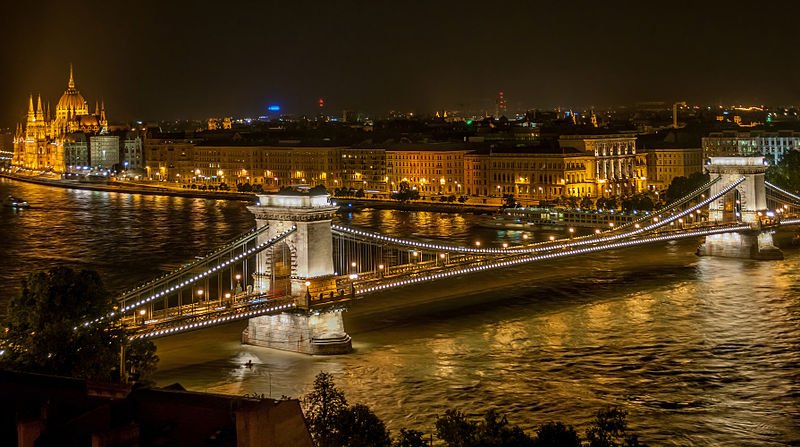 Szechenyi Chain Bridge, Budapest
Szechenyi Chain Bridge, BudapestSource: https://commons.wikimedia.org/wiki/File:Sz%C3%A9chenyi_Chain_Bridge_in_Budapest_at_night.jpg
Author: Wilfredor

Budapest is the capital and largest city in Hungary. Straddling the Danube River, it is widely recognised as one of the most beautiful in Europe. The city covers 525.16 sq km (202.8 sq mi) and has a population of 1.7 million people (2011 estimate), within a metropolitan area ("Budapest Commuter Area") holding a population of 3.2 million people.
Budapest observes the Central European Time zone, which is an hour ahead of Coordinated Universal Time (UTC+1), and two hours during Daylight Saving Time in summer. It experiences a temperate, transitional climate. The warmest month here are June and July, when the average high temperature of the day regularly reaches 26°C (78.8°F) and often more. Coldest month is January, when the average temperature drops to -4°C (24.8°F). June is the wettest month, with 69.8 mm (2.75 in) of precipitation, followed by May, with 64.5 mm (2.54 in).
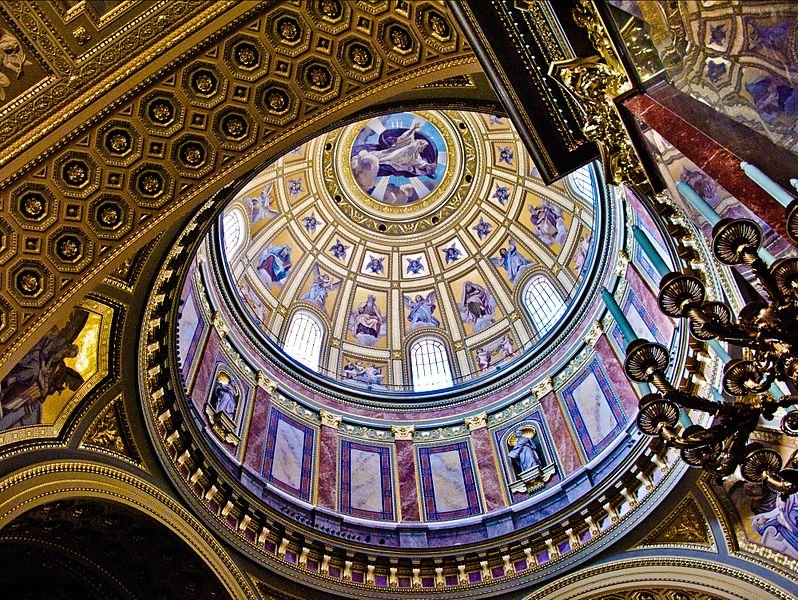 Cupola of St Stephen's Basilica, Budapest
Cupola of St Stephen's Basilica, BudapestSource: https://commons.wikimedia.org/wiki/File:Cupola_of_the_St._Stephen%27s_Basilica_in_Budapest.jpg
Author: Roy Grundeken

The city of Budapest was created in 1873 from the merger of three cities, Buda and Óbuda on the west bank of the Danube, with the city of Pest, on the east bank. Human habitation in the area goes back to the time of the Celts before AD 1. The Romans established a settlement here in AD 106 called Aquincum. The modern city trace its roots to Buda Fortress and Pest Fortress built by the Bulgarian army during the 9th century.
The city of Buda was the main precursor of Budapest. It became the capital of Hungary in 1361. It was attacked by the Ottomans in 1526, besieged in 1529, and eventually occupied from 1541 until 1686, when the Holy League's army of Christian soldiers managed to reconquer Buda, and in the following years, won back lands captured by the Turks.
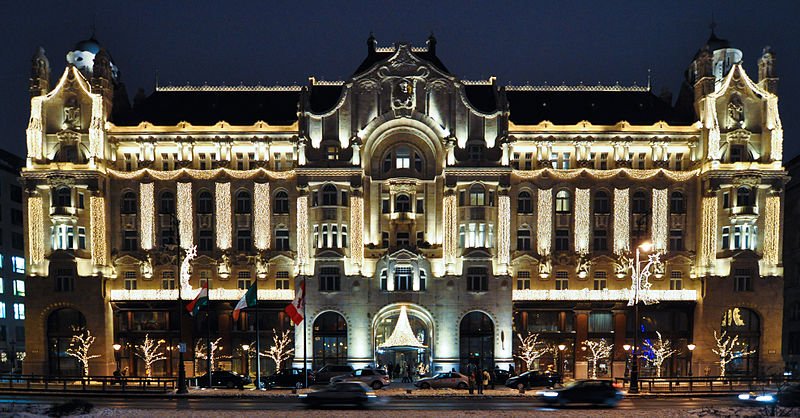 Gresham Palace, Budapest
Gresham Palace, BudapestSource: https://en.wikipedia.org/wiki/File:Budapest_four_seasons.jpg
Author: Dd-ang2s

In 1867, the twin monarchy of the Austro-Hungarian Empire made Buda the capita, just a few years before it merged with Pest and Óbuda. When the Austro-Hungarian Empire collapsed following the First World War, Hungary declared itself independent during a turbulent period where it saw its boundaries shrinking by over two-thirds. It was further devastated by the Second World War, when it suffered bombings by British and American forces. Many of its Jewish population was also liquidated genocide perpetrated by the Nazi and its local ally, the Arrow Cross Party.
Budapest went through a period of rebuilding and restoration between the 1960's and late 1980's. The collapse of the Soviet Union brought a peaceful transition to a free-market economy for Hungary.
Today Budapest is a modern, developed city that serves as the political, cultural, commercial and transportation hub of Hungary, and the financial hub of Central Europe. It is also one of Central Europe's a major tourist destination. It has the biggest airport in the country, and all the major expressways of Hungary spread out from the city.
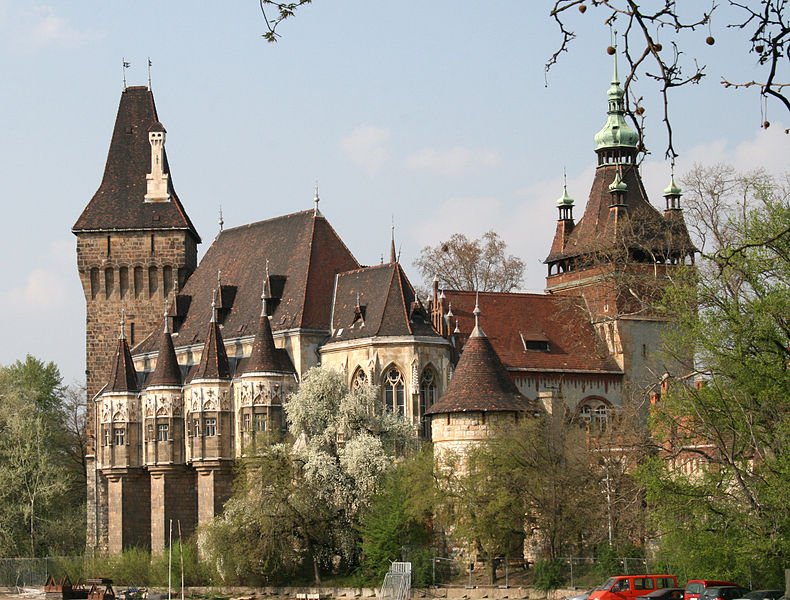 Vajdahunyad Castle, Budapest
Vajdahunyad Castle, BudapestSource: https://commons.wikimedia.org/wiki/File:Budapest_Vajdahunyad_5.jpg
Author: Karelj

Visiting Budapest, Hungary
The Budapest-Franz Liszt International Airport (BUD) is the biggest airport in Hungary. Located 16 km (10 mi) to the southeast of downtown Budapest, the airport has two terminals. Arriving at the airport, you have the option of taking the bus, minibus or taxi. Bus 200E takes you from Terminals 1 and 2 to the Kõbánya-Kispest Metro Line 3 station.Exploring Budapest
Exploring on foot provides you the best opportunity to view and appreciate Budapest's historic buildings and architecture. For greater distances, you can take the subway, trams and buses. The public transport of Budapest is managed by the Budapest Transport Company. The best value, if you wish to use public transport extensively, is to get the travel cards, which allow unlimited travel for specific durations. They are available for 24-hours for HUF 1550, 72 hours for HUF 3850 and 7 days for HUF 4600.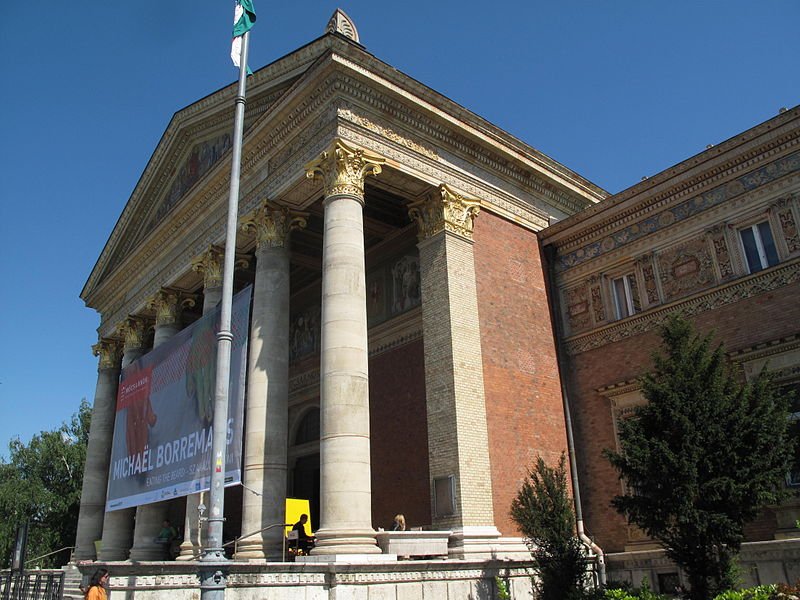 Heroes Square, Budapest
Heroes Square, BudapestSource: https://commons.wikimedia.org/wiki/File:Budape%C5%A1%C5%A5_0052.jpg
Author: Dezidor

Places of Interest in Budapest, Hungary
Around Castle Hill- András Hess Square
- Buda Lutheran Church
- Budapest History Museum
- Church of St Mary Magdalene
- Fisherman's Bastion
- Golden Eagle Pharmacy Museum
- Hilton Budapest Hotel
- Holy Trinity Square
- Hungarian National Gallery
- Labyrinth
- Lords' Street
- Mátyás Church
- Mátyás Fountain
- Mihály Táncsics Street
- Museum of Military History
- National Széchényi Library
- Parade Square
- Parliament Street
- Royal Wine House and Cellar Museum
- Sándor Palace
- Tunnel
- Vienna Gate Square
- Baglioni Hotel and Rácz Thermal Spa
- Citadel
- Gellért Hotel and Baths Complex
- Golden Stag House
- Liberation Monument
- Queen Elizabeth Monument
- Rock Church
- Rudas Baths
- Semmelweis Museum of Medical History
- Statue of St Gellért
- Tabán
- Tabán Parish Church
- Hungarian Parliament Building
- Budapest Operetta Theater
- Drechsler Palace
- Ethnological Museum
- Gresham Palace
- Hungarian Academy of Sciences
- Liberty Square
- Ministry of Agriculture
- Radisson SAS Béke Hotel
- Roosevelt Square
- St Stephen's Basilica
- State Opera House
- City Council Chamber
- Ervin Szabó Library
- Ferenc Liszt Music Academy
- Great Synagogue
- House of Terror Museum
- Hungarian National Museum
- Inner City Parish Church
- Jewish Quarter
- Klotild Palaces
- Mihály Vörösmarty Square
- Museum of Applied Arts
- New Theater
- New York Palace
- Pest County Hall
- Turkish Bank
- University Church
- Váci Street
- Vigadó Square
- Aquincum
- Buda Hills
- Budapest Holocaust Memorial Center
- Eagle Hill Nature Reserve
- Jewish Museum
- Margaret Island
- Memento Park
- Museum of Fine Arts
- Műcsarnok Palace of Art
- Palace of Arts
- St Anne's Church
- Széchenyi Baths
- Vajdahunyad Castle
- Városliget City Park
 Latest updates on Penang Travel Tips
Latest updates on Penang Travel Tips
 Discover with Timothy YouTube Channel
Discover with Timothy YouTube Channel
 PG Food Channel
PG Food Channel
 Learn Penang Hokkien YouTube Channel
Learn Penang Hokkien YouTube Channel
 SojiMart Videos
SojiMart Videos
Latest from Discover with Timothy: Gurney Bay - what to see and do there
About this website

Hello and thanks for reading this page. My name is Timothy and my hobby is in describing places so that I can share the information with the general public. My website has become the go to site for a lot of people including students, teachers, journalists, etc. whenever they seek information on places, particularly those in Malaysia and Singapore. I have been doing this since 5 January 2003, for over twenty years already. You can read about me at Discover Timothy. By now I have compiled information on thousands of places, mostly in Peninsular Malaysia and Singapore, and I continue to add more almost every day. My goal is to describe every street in every town in Malaysia and Singapore.
Robbie's Roadmap
- Episode 1: Robbie's Journey to Financial Freedom
- Episode 2: Lost in America
- Episode 3: The Value of Money
- Episode 4: The Mentor
- Episode 5: The Thing that Makes Money
- Episode 6: The walk with a Billionaire
- Episode 7: The Financial Freedom Awakening
- Episode 8: Meet Mr Washington
- Episode 9: The Pizzeria Incident
Copyright © 2003-2024 Timothy Tye. All Rights Reserved.


 Go Back
Go Back